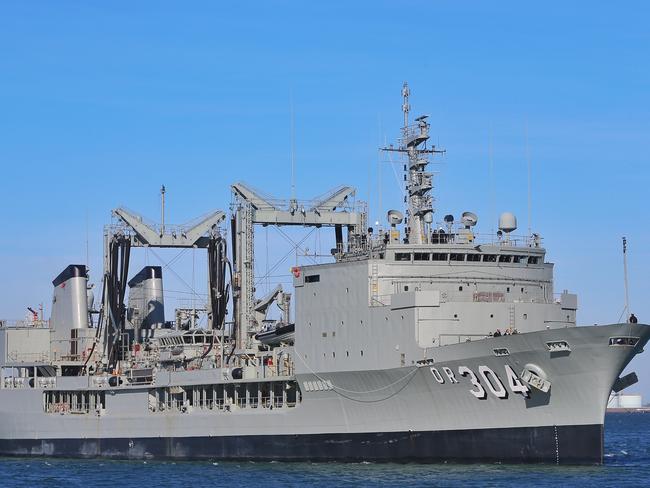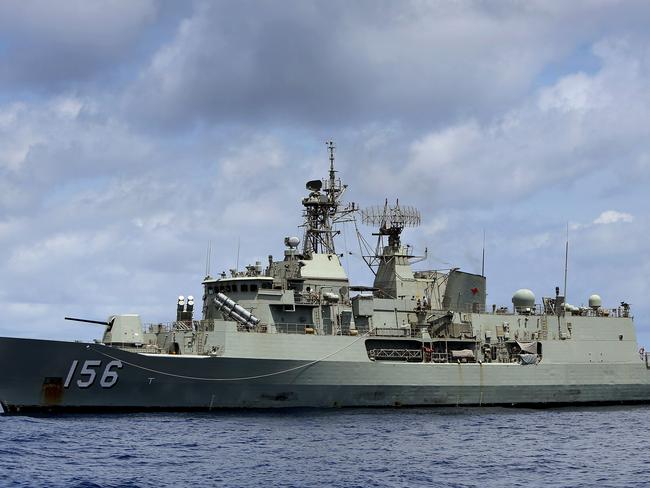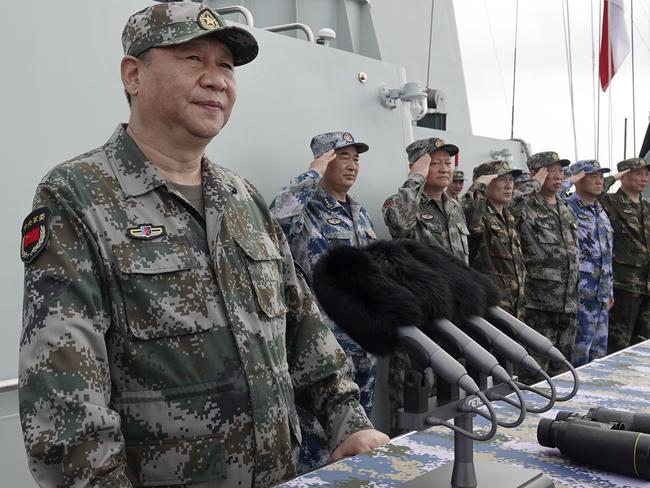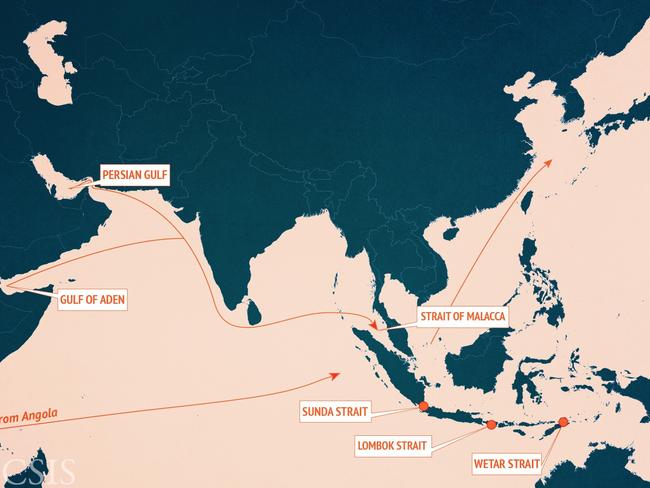Australian warships challenged by Chinese military in tense South China Sea confrontation
AUSTRALIAN warships were reportedly challenged by the Chinese military in the South China Sea as the superpower continues its blunt show of force.
AUSTRALIAN warships were confronted by the Chinese military in the South China Sea as the People’s Liberation Army continues its show of force in the region.
HMAS Anzac, HMAS Toowoomba and HMAS Success were travelling through the contentious waters this month when they were challenged by the Chinese, the ABC reports.
An anonymous official told the publication the exchange was civil but “robust”.
The Australian ships were on their way to Vietnam for a three-day goodwill visit in Ho Chi Minh City.
Prime Minister Malcolm Turnbull has not confirmed or denied the incident occured but said Australia has a “perfect right” to sail through the South China Sea.
“All I can say to you is we maintain and practice the right of freedom of navigation and overflight throughout the world,” Mr Turnbull told reporters at a press conference in London overnight.

“In this context, you’re talking about naval vessels on the world’s oceans including the South China Sea, as is our perfect right in accordance with international law.”
The naval challenge comes amid a breakdown in Australia-China relations after the Turnbull Government announced new laws to crackdown on foreign interference and espionage in December.
China has reportedly declined to grant visas to federal government ministers as relations have worsened over several flare ups since, including the scandal surrounding former Labor Senator Sam Dastyari’s ties to a Chinese businessman and a string of remarks by ministers criticising China’s push into the South Pacific.
Yesterday China’s Ambassador to Australia Cheng Jingye delivered a dire warning that a “growing lack of mutual trust” between the two countries could damage trade.
He told The Australian there was “huge potential” for more co-operation between Australia and China in coming decades.
“Unfortunately, over a certain period, especially starting from the latter half of last year, we have seen a kind of systematic, irresponsible, negative remarks and comments regarding China which has caused adverse impact on bilateral relations,” he said.
“It is detrimental to the image of Australia in the eyes of the Chinese public. It is something that neither side would like to see.”

The Defence Department did not comment on the report when contacted by the ABC.
“As they have done for many decades, Australian vessels and aircraft will continue to exercise rights under international law to freedom of navigation and overflight, including in the South China Sea,” a spokesperson said.
It comes as China has increased military activity in the contested region recently.
Earlier this month President Xi Jinping presided over the Chinese navy’s largest-ever military display, which represents the country’s latest show of force in theSouth China Sea.
State broadcaster China Central Television showed footage of Xi boarding the destroyer Changsha before sailing to an unspecified location and watching the procession, which involved more than 10,000 naval officers, 76 fighter jets, and a flotilla of 48 warships and submarines.

Xi told the assembled troops that China’s need for a world-leading naval force “has never been more pressing than today” and urged them to devote their unswerving loyalty to the party, before watching through binoculars four J-15 fighter jets take off from the Liaoning, China’s sole operational aircraft carrier.
He said the People’s Liberation Army should work to develop its naval forces, build up modern maritime combat system and strengthen its capability in diversified military missions.
China’s armed forces, the world’s largest, are in the midst of an ambitious modernisation program, which includes investment in technology and new equipment such as stealth fighters and aircraft carriers, as well as cuts to troop numbers.

But China’s military build-up has unnerved its neighbours, particularly because of its increasing assertiveness in territorial disputes in the East and South China Seas and over Taiwan, a self-ruled territory Beijing claims as its own.
China also held live-fire military drills in the Taiwan Straits on April 18.
Taiwan’s defence ministry said in a statement that its army had the situation under control and could ensure Taiwan’s safety.
The naval review comes as the USS Theodore Roosevelt, leading a carrier strike group, conducted what the US military called routine training in the disputed South China Sea on Tuesday.



